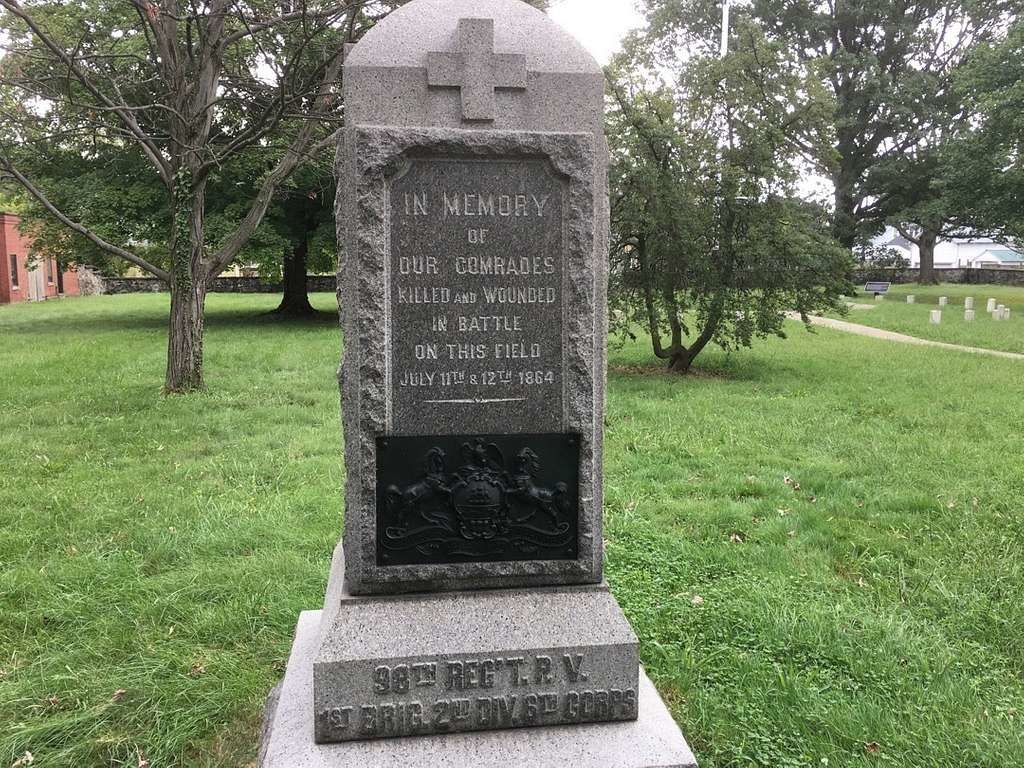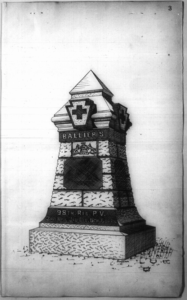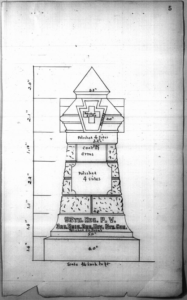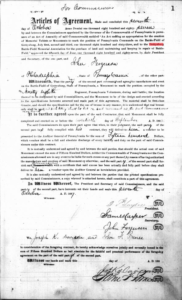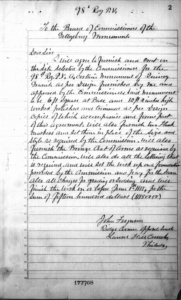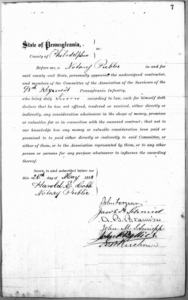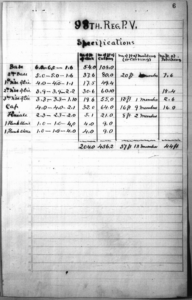Mr. Louis Soistman was one of our own—a Veteran of the 98th PA. He is currently buried in an unmarked grave at Lawnview Cemetery in Rockledge, PA.
Frank Jasrzembski of
Shrouded Veterans is currently raising funds to cover the cost of a government-issued veteran headstone (*more specifically; the cemetery fee for foundation/installation) for Mr. Soistman, and the fund is currently most of the way toward the very-reachable $320 goal.
If you can spare $5 or more, please make a contribution through the GofundMe link.
Read Mr. Soistman’s story below:
Louis Soistman was born on October 28, 1840, in Philadelphia, Pennsylvania. His father, Charles Joseph Soistman, a German bottle mold maker, brass founder, and turner, arrived in Philadelphia about five years before his birth. In July 1859, Louis Soistman left for Europe to visit friends in Prussia. A Catholic, the 18-year-old enlisted in the Papal Army, signing up to serve for four years. After his defeat at the Battle of Castelfidardo, General de Lamoricière surrendered the Papal Army to the Sardinians on September 29. Soistman was among the prisoners of war. The Sardinians handed him over to the Austrian military authorities at Peschiera, who gave him free passage to Trieste. Soistman arrived at the U.S. consulate in the uniform of a Papal soldier and requested aid.
Stephen S. Remak, the U.S. consul at Trieste, sent a letter to his brother, Gustavus, who lived in Philadelphia, asking him to deliver a message to the teenager’s father. “You are aware that the U.S. Government makes no provision for such cases,” Remak wrote his brother, “still I maintain him [Soistman] at my personal risk and expense, he would otherwise be left to starvation.” Remak informed his brother that he would have to send Soistman to Vienna and that “my total outlay cannot be less than $15.” He asked Charles Soistman to reimburse him the amount. “If Mr. Charles Soistmann [sic] entertain any feelings for his son at all,” Remak wrote, “he will surely promptly pay the small amount into your hands.”
He also recommended that the elder Soistman send $120 to $150 addressed to Jehu Glancy Jones, the envoy extraordinary and minister plenipotentiary to Austria in Vienna, or to his son’s friends in Prussia so that he could return to the United States.
Remak transmitted a certified copy of the affidavit which provided details of the case, sworn to by Soistman, to Jones, leaving it to him to determine whether any claim could be made against the Papal government.
“I incur in this matter expenses of more than an ordinary character, but no American vessel being here, I fear this young man who appears to be of respectable parentage might be totally ruined by ill,” he declared. “His acts surely deserve no sympathy, as he has violated the laws of his country in taking up arms against a State with whom we live in peace and amity and that State promising to become the liberator of a great nation.”
SERVICE IN THE 98th PA:
———————————
Louis Soistman did eventually make it back to Philadelphia, and on September 28, 1861, he enlisted in the 98th Pennsylvania Infantry to put down the rebellion. On July 25, 1862, he was appointed a second lieutenant. On December 26, he was promoted to first lieutenant.
On May 3, 1863, Lieutenant Soistman was wounded at Salem Heights, Virginia, when a shell pierced his right thigh. Three days after he was wounded he was admitted to the Campbell General Hospital in Washington, D.C., where a physician failed to discover that a piece shell had embedded itself in his thigh. A private physician in Philadelphia also failed to notice it. On July 8, Soistman was admitted to the Officers’ Hospital in Philadelphia where Acting Assistant Surgeon W. Hunt felt something unusual with Soistman’s thigh and used a probe to locate the shell fragment. The next day, Hunt enlarged the wound and, after considerable trouble, removed, with the assistance of forceps, a piece of shell weighing 9 ounces, which had been lodged in his thigh for 66 days. Soistman only complained of his leg feeling heavy. On November 9, he returned to duty.
On May 5, 1864, Soistman was again wounded in the right side at the Battle of the Wilderness. He returned to duty at the beginning of August and was mustered out in October. In 1870, while applying for a pension, the Philadelphia Examining Board reported that his Salem Heights wound, although healed, left a scar roughly 5 inches long and 4 inches wide, and the loss of muscular tissue caused partial paralysis in his leg.
After the war, Soistman joined his brothers, Conrad and Frederick, in the drum-making business.
He died on November 3, 1885, at the age of 45 from cirrhosis. He was first buried at Odd Fellows Cemetery in Philadelphia, but his remains were relocated, with many others, to Lawnview Cemetery in Rockledge, Pennsylvania, in 1908.
He is currently buried in an unmarked grave.
Frank Jastrzembski is raising funds to cover the cemetery foundation/installation fee for a government-issued veteran headstone.
Any Amount Will Get Us Closer!
As of October 10, 2023, we’re only $140 Away!

